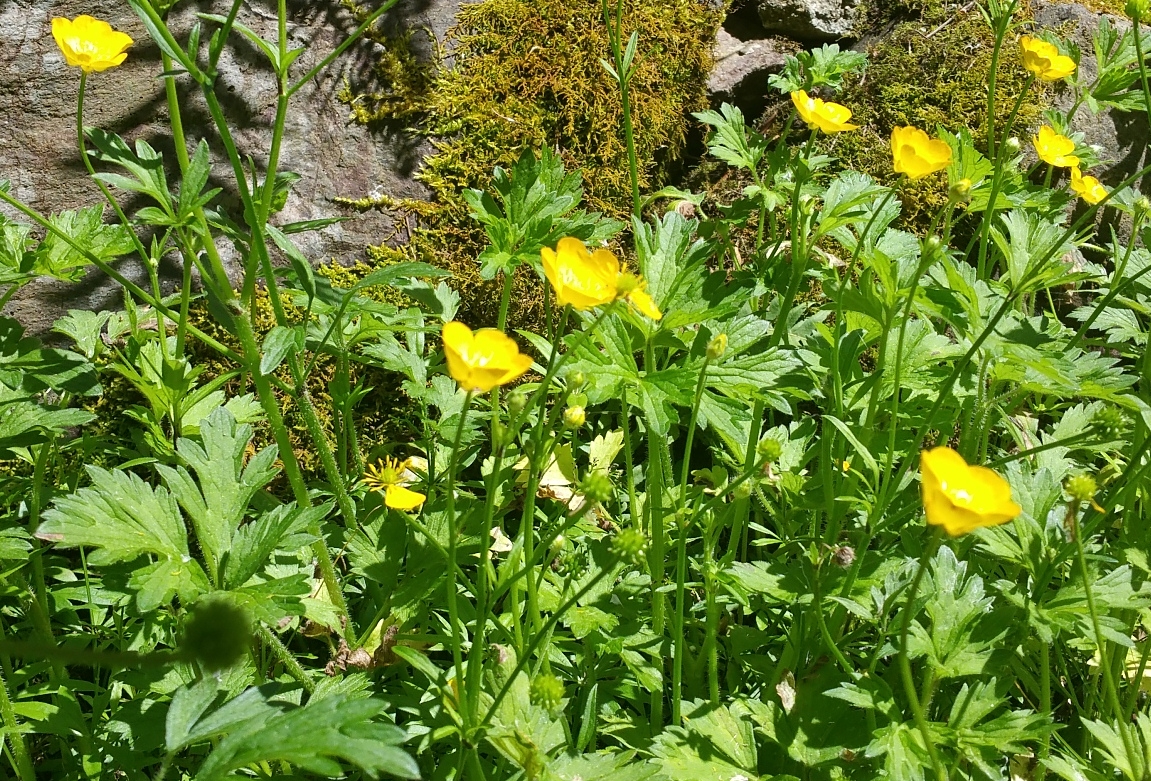It has spread like wildfire through woodland areas in the Northeast and in the Pacific Northwest. Today, it is considered an invasive plant in Connecticut, Delaware, Maryland, New Jersey, Oregon, Pennsylvania, Virginia, Wisconsin, West Virginia, and in the District of Columbia. Lesser celandine blooms in March and April with happy yellow blooms. Ranunculus typically bloom about 90 days after planting. Once flowering begins, you can expect to get flowers for 4 to 6 weeks. In good growing conditions, each ranunculus plant develops a large root ball. If you are growing ranunculus in pots, be sure to allow plenty of space for the roots so the plants can get reach their full potential. The basic ranunculus care and maintenance instructions are centered around providing the essential growth requirements. Remember that ranunculus plants grow best in areas, where spring season is cool and long, and winter temperature is not extremely cold.
If you’ve spent any time at all looking through Pinterest or any other means of bridal bouquet inspiration then you have seen them, Anemones, with their snow white petals encircling a dramatic dark center, peeking out of or taking center stage in stunning bridal bouquets. Also, Ranunculus, the round little flowers with layers on layer of petals in all sorts of bright and soft colors. We all fall hard and fast for this Spring blooming pair, and as farmer florist, we dream of harvesting our own to tuck into your bouquets and arrangements.
- Fast propagation:Bulbs like tulips, daffodils, and gladiolas only double or triple the number of bulbs that can be collected and made to flower the next season. It's not unusual to get eight new tubers from a single ranunculus in one year.
- Ranunculus typically bloom about 90 days after planting. Once flowering begins, you can expect to get flowers for 4 to 6 weeks. In good growing conditions, each ranunculus plant develops a large root ball. If you are growing ranunculus in pots, be sure to allow plenty of space for the roots so the plants can get reach their full potential.
The thing is, Ranunculus and Anemones are both a bit particular in their needs and I would be lying to say that it hasn’t been a bit of a trial and error process to figure these beauties out. However, once you succeed and see even just one cheery little face unfolding for the sun, you’ll be hooked like we are. Thankfully, last year we had a very successful go around and we are very excited to refine our process and especially to share what we have learned with you!
The Nitty Gritty:
Flourish flower farm is located in Eastern Lancaster County, PA in USDA Hardiness Zone 6b. In Zone 6, our last frost date in the Spring usually hits somewhere around May 15th, while the first frost can be expected between October 15th and 30th. If you are reading from another area, you may want to look up your zone and adjust your dates accordingly.
Anemones and Ranunculus are similar in their form and growing process, so if you can master one, you’ll likely have success with both. Although, we have learned that Anemones are a bit hardier than Ranunculus and not quite as picky, so you may want to start with them if you want to ease into this process.
Both appreciate some exposure to cold temperatures (but not too cold) and will give you better quantity and quality blooms if planted out in the winter with proper preparation and protection.
They both come as “corms”, which are pretty much just hard shriveled looking brown things that aren’t quite a bulb or a seed.
This year we planted half of our order outside in December, with two layers of frost cover. We are hoping they will bloom nice and early. Our second planting is in the works now and will be planted out at the end of February to give us some later spring blooms. It is not too late to start your own planting! Follow along with the instructions below to get started, you won’t regret it!
Pre Sprouting
Before you plant the corms, it’s important to give them a head start inside.
Step 1: Unpack your corms and soak in lukewarm water for 2-4 hours. It is best practice to have air moving through your water, either by leaving the sink or hose dripping into your container, or we’ve found that stirring it every now and then will suffice.
Step 2: Once your corms have rehydrated and expanded they should feel softer and look larger.

Step 3: Fill a tray, or container that has sides, with a couple inches of potting soil and then spread your corms on top of the soil. Place Ranunculus corms with the legs facing down into the soil and Anemones with the pointed end down. They can be pretty close together but not touching. You may also want to think about marking the different varieties so you know which kinds are where when you go to plant.
Step 4: Cover the corms with another two inches of damp soil and store in a cool, dry space to allow time for sprouting. Keep the soil moist during this time, but not soggy. Check the corms periodically. You should start to see little hairy sprouts under the soil in about 10 days, and green shoots with small leaves in about two weeks.
Planting- About 2-3 weeks after pre sprouting
Anemones and Ranunculus corms are ready to plant when they have sprouted roots and small green shoots are starting to emerge above the soil in your tray. You don’t want to leave them too long in that state or their roots will get too entwined and the shoots too long and weak.
Step 1: Both Anemones and Ranunculus need to be planted about 2-3 inches underground, with pointy ends and legs pointing down, respectively. Anemones should have about 6 inches in between each plant and Ranunculus should have a little more, around 9 inches.
Do Ranunculus Flowers Spread
Step 2: We cover the planted area with small hoops and white cloth to keep the corms safe from frost but still allow water and sun to get in. It’s important that whatever cloth you use for covering does not touch the sprouts, or else they will freeze when a frost hits.
Do Crocosmia Spread
You can expect the plants to flower in the Spring and continue to bloom through May. Anemones and Ranunculus do not thrive in the high heat of summer and are usually wrapping up when June comes around, so make sure to enjoy them while they last! Thanks for following along and feel free to contact us with any comments or questions you may have. We would love to hear from you!
Ranunculus summary
| Height: | 40cm |
| Spread: | 40cm |
| Period for planting Ranunculus bulbs | January to December |
| Ranunculus flowering period: | July to August |
Ranunculus bulbs planting instructions

Well-drained soil
Planting Ranunculus bulbs is easy. Plant your ranunculus bulbs in a location where the soil drains well. If necessary, fine-tune the soil with the addition of organic material, raising the level 2-3 inches to improve drainage. Peat moss, compost, ground bark or decomposed manure all work nicely and are easily available.How to plant ranunculus bulbs
Dig holes and plant the ranunculus bulbs 2 inches deep and 4-6 inches apart. Place your ranunculus into the planting hole with the ‘bananas’ pointing downwards.Location for planting Ranunculus bulbs
Ranunculus requires full sun. It will tolerate shade in the morning, but needs full sun in the afternoons in order to bloom. If in doubt, give your ranunculus more sun!Ranunculus maintenance instructions
When planting ranunculus bulbs make sure you water them generously, soaking the area thoroughly is recommended. Roots and sprouts will form in the autumn. Taller growth will begin in winter and flowers will develop in the spring.Cutting Ranunculus brings you more flowers
When in bloom, don’t hesitate to cut ranunculus flowers for bouquets; the more you cut, the more blooms your ranunculus will produce, so make the most of it.Once blooming has finished for the season, leave the ranunculus foliage in place; don't cut it off. The leaves will harvest sunlight which will provide nourishment for next year's show. Water as needed during active growth periods. Ranunculus prefer not to be watered when dormant.

Do Ranunculus Come Back Every Year
As summer comes to an end, ranunculus leaves will yellow and die back as the plant becomes dormant. Foliage can be removed at this point. Your ranunculus will have a rest for a few months before beginning the next growing cycle. Our ranunculus bulbs, as well as all our other products, are delivered with detailed planting instructions.
Our ranunculus bulbs, as well as all our other products, are delivered with detailed planting instructions.Are Ranunculus Annuals Or Perennials
Ranunculus Propagation
Start planting Ranunculus bulbs today! Click here to see our collection of Ranunculus bulbs!